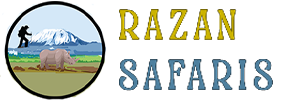Ultimate Kilimanjaro Altitude Sickness – 2025 Guide to Prevention and Recovery : Table of Contents
Ultimate Kilimanjaro Altitude Sickness – 2025 Guide to Prevention and Recovery : What Is Kilimanjaro Altitude Sickness?
Altitude sickness occurs when your body doesn’t acclimatize properly to the lower oxygen levels at high elevations. On Kilimanjaro, you’ll ascend from about 1,800m (5,900 ft) to 5,895m (19,341 ft)—a significant change in a short time.
Kilimanjaro altitude sickness 2025 is a top concern for trekkers. Even fit and experienced hikers can suffer symptoms without the right precautions.
Ultimate Kilimanjaro Altitude Sickness – 2025 Guide to Prevention and Recovery : Common Symptoms to Watch For
Mild symptoms may feel like the flu, while severe forms can be life-threatening.
🟡 Mild (Acute Mountain Sickness – AMS):
-
Headache
-
Nausea
-
Fatigue
-
Dizziness
-
Poor sleep
🔴 Moderate to Severe (HAPE or HACE):
-
Shortness of breath at rest
-
Confusion or unsteady gait
-
Wet cough or chest tightness
-
Loss of consciousness (in extreme cases)
📌 Note: Symptoms often begin above 3,000 meters and may worsen if ignored.
Ultimate Kilimanjaro Altitude Sickness – 2025 Guide to Prevention and Recovery : Top Prevention Tips for 2025 Climbers
✅ 1. Choose Longer Routes
The 7- to 9-day treks (like Lemosho or Northern Circuit) allow better acclimatization.
✅ 2. Follow “Pole Pole” (Slowly, Slowly)
Walk slowly even if you feel strong—this helps your body adjust gradually.
✅ 3. Stay Hydrated
Drink 3–4 liters of water daily. Dehydration worsens symptoms.
✅ 4. Avoid Alcohol and Sleeping Pills
These suppress breathing, which can hinder oxygen intake at high altitudes.
✅ 5. Take Preventative Medication
Discuss with your doctor about Acetazolamide (Diamox). It helps speed up acclimatization.
✅ 6. Hike High, Sleep Low
Where possible, climb higher during the day and descend to sleep lower—many treks include this naturally.
Ultimate Kilimanjaro Altitude Sickness – 2025 Guide to Prevention and Recovery : How to Treat Altitude Sickness on Kilimanjaro
🎒 Mild AMS:
-
Rest and stay at your current altitude
-
Drink water and take ibuprofen or paracetamol
-
Avoid further ascent until symptoms improve
🚨 Moderate to Severe:
-
Immediate descent is essential
-
Use bottled oxygen if available
-
Guides should carry oximeters and a portable hyperbaric bag
👨⚕️ Always inform your guide at the first sign of symptoms—they are trained in altitude response.
Recovery and Safety Protocols
🌄 Recovery Steps:
-
Descend 500–1,000 meters immediately if symptoms persist or worsen
-
Rest at lower altitudes for 24–48 hours
-
Most climbers recover quickly once they descend
💡 Guides Are Key
Ensure you climb with certified operators who offer daily health checks, oxygen, and a solid evacuation plan.
Final Thoughts on Climbing Safely
Don’t let Kilimanjaro altitude sickness in 2025 stop your summit dreams. With the right preparation, pace, and support, you can reduce the risks and enjoy your climb.
🎯 Climb smart, listen to your body, and summit safely.








Hi, after reading this remarkable piece off writing
i am too delighted too shade mmy familiarity here with mates. https://glassi-App.Blogspot.com/2025/08/how-to-download-glassi-casino-app-for.html